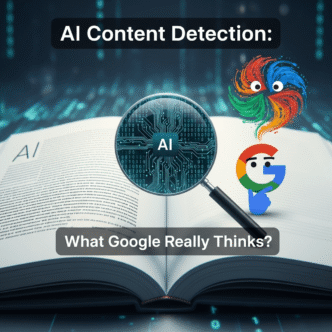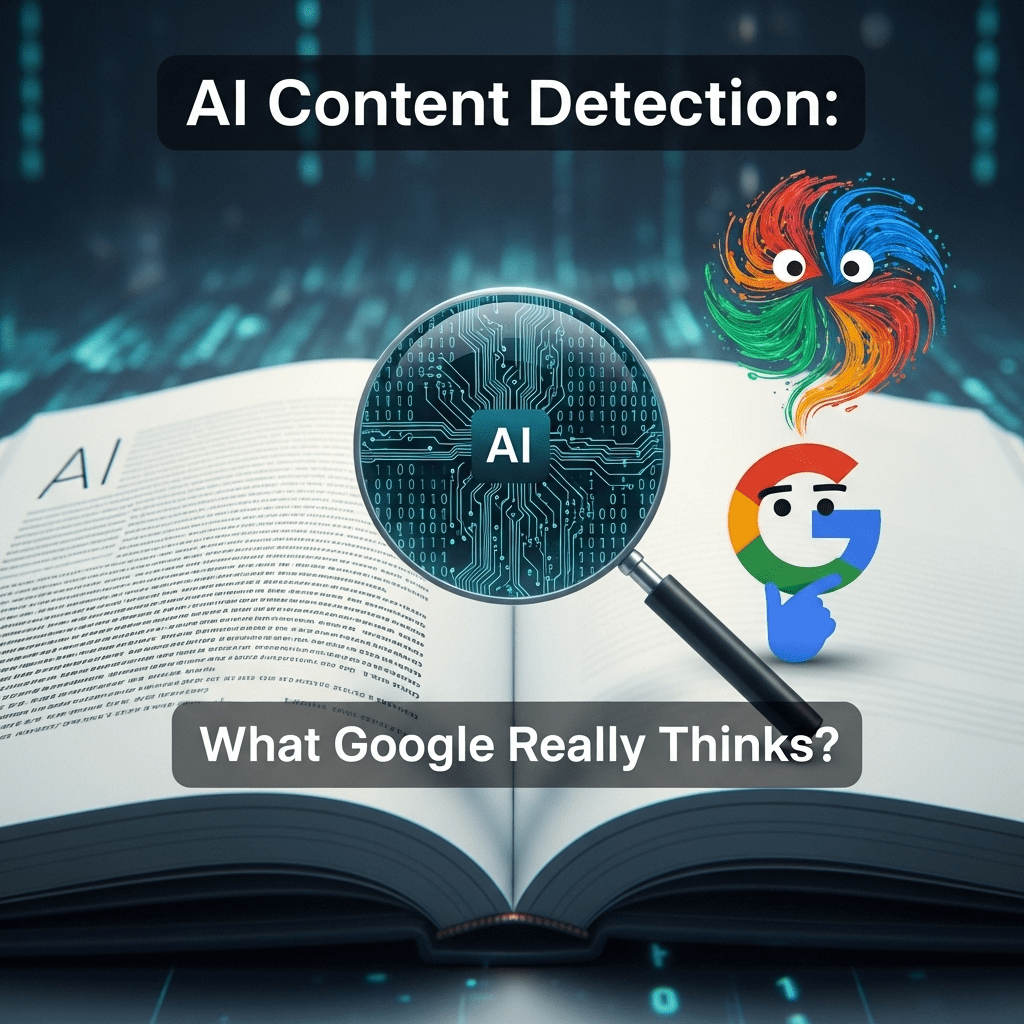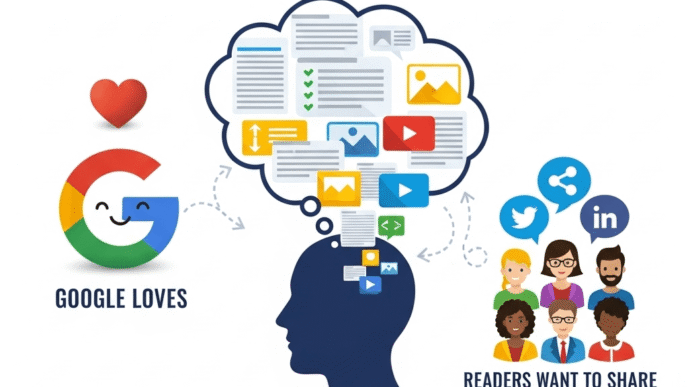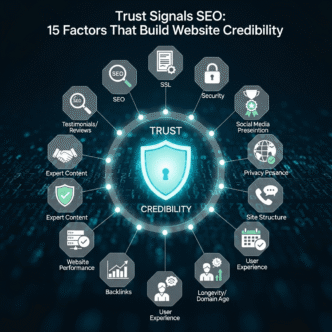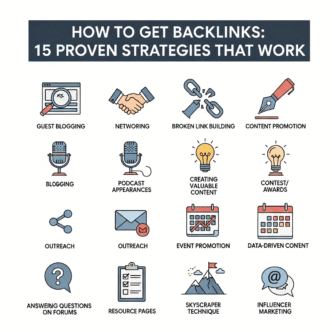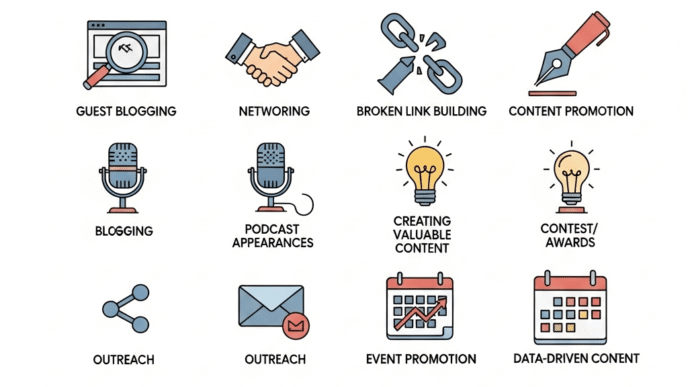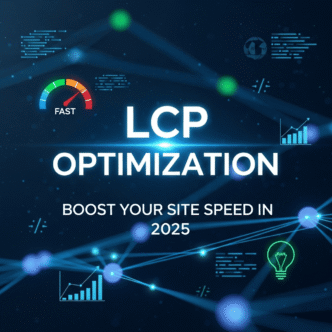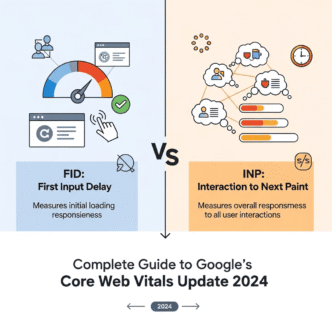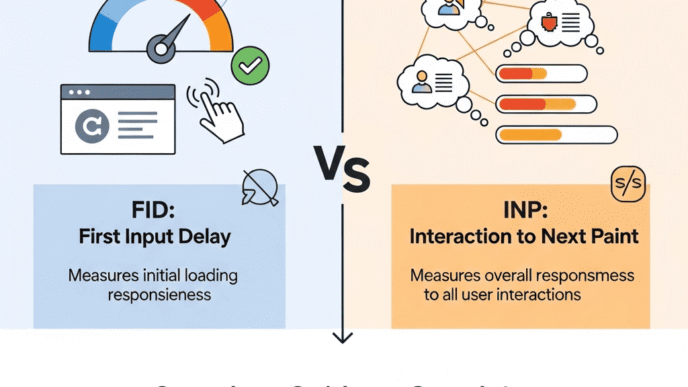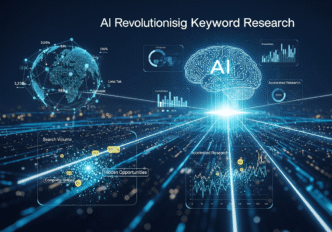Ever hit “publish” on an AI-assisted article and wondered if Google’s algorithms are silently judging your content choices? You’re not alone. With AI content detection becoming a hot topic in 2025, content creators are walking a tightrope between efficiency and authenticity.
If you’ve been losing sleep over whether your AI-generated content will get penalized, or wondering how sophisticated Google’s content detection tools really are, this guide will give you the clarity you need. Because let’s face it – the AI genie is out of the bottle, and there’s no putting it back.
The question isn’t whether to use AI anymore. It’s how to use it smartly without triggering Google’s quality radar while maintaining the trust and authority signals that Google values.
Table of Contents
ToggleWhat Is AI Content Detection and Why Does Google Care?
AI content detection refers to the methods and technologies used to identify whether content was created by artificial intelligence rather than humans. Think of it as Google’s way of playing detective with your blog posts.
But here’s where it gets interesting: Google doesn’t actually hate AI content. What they hate is low-quality content that doesn’t help users, regardless of who (or what) wrote it.
Google’s official stance has been surprisingly nuanced. They’ve repeatedly stated that they reward helpful, original, people-first content – not necessarily human-first content.
Why the Sudden Focus on Artificial Intelligence Content?
The explosion of AI writing tools like ChatGPT, Claude, and Jasper has flooded the internet with machine-generated text. Some of it’s brilliant, some of it’s garbage, and Google’s job is to figure out which is which.
The real concern isn’t the AI itself – it’s the lazy content creators who pump out thin, unhelpful articles at scale using AI without adding any human value or expertise.
Pro Tip: “Google’s algorithms are designed to reward content that demonstrates Experience, Expertise, Authoritativeness, and Trustworthiness (E-E-A-T). AI can help you research and draft, but human insight and experience are what make content truly valuable.” – This principle is fundamental to Google’s comprehensive E-E-A-T framework.
How Google Detects AI-Generated Content: The Technical Reality
Let’s cut through the rumors and look at how Google detects AI-generated content based on what we actually know.
Google’s Multi-Layered Detection Approach
Algorithmic Analysis: Google’s systems analyze writing patterns, sentence structure, and content flow that are typical of AI generation.
Quality Signals: They look for markers of low-quality content like:
- Repetitive phrasing patterns
- Lack of original insights or data
- Generic, surface-level information
- Missing author expertise signals
User Behavior: Content that doesn’t engage users (high bounce rates, low time on page) gets flagged regardless of its origin.
The Sophistication Level: More Advanced Than You Think
Google has access to massive amounts of training data and can identify subtle patterns that distinguish automated content from human writing. However, they’re not primarily looking for AI fingerprints – they’re looking for value signals.
Research from Stanford University shows that current AI detection tools have accuracy rates between 60-80%, but Google’s internal systems are likely more sophisticated.
Google Policy on AI-Generated Content: What’s Actually Allowed?
Here’s the plot twist that many content creators miss: Google doesn’t ban AI content. Their policy is refreshingly straightforward.
Google’s Official Position on Machine-Generated Text
According to Google’s guidelines, AI-generated content is acceptable if it:
- Provides genuine value to users
- Demonstrates expertise and experience
- Follows E-E-A-T principles
- Isn’t created primarily to manipulate search rankings
What Google explicitly prohibits:
- Content created solely to game search rankings
- Automated content that lacks human oversight
- Misleading or harmful information
- Thin content at scale without added value
Real-World Policy Applications
Allowed: Using AI to help research, outline, or draft content that you then enhance with personal expertise and insights.
Not Allowed: Publishing raw AI output without human review, fact-checking, or value addition.
Gray Area: Heavy AI assistance with significant human editing and expertise addition.
AI Content Detection Tools and Methods: What’s Available in 2025
The market for AI writing detection tools has exploded, but their effectiveness varies dramatically.
Popular Content Detection Tools Comparison
| Tool | Accuracy Rate | Strengths | Limitations | Best For |
|---|---|---|---|---|
| GPTZero | 65-75% | Free, easy to use | High false positives | Quick checks |
| Originality.AI | 70-80% | Batch processing | Subscription required | Content teams |
| Turnitin | 75-85% | Academic focus | Expensive, academic-only | Educational content |
| Copyleaks | 70-78% | Multi-language support | Can miss sophisticated AI | International content |
| Writer.com | 68-76% | Integrated editing | Limited free version | Professional writing |
The Accuracy Problem: Why Tools Aren’t Perfect
Even the best AI content quality detection tools struggle with:
- Human-edited AI content: Once humans significantly modify AI output, detection becomes much harder
- Advanced AI models: Newer AI systems produce more human-like text
- False positives: Human content sometimes gets flagged as AI-generated
- Mixed content: Content that’s partially AI-generated and partially human
Pro Tip: “Don’t rely solely on AI detection tools to validate your content strategy. Focus on creating genuinely helpful content that serves your audience, regardless of how it’s produced.”
Using AI Content Without SEO Penalties: The Strategic Approach
The secret to using AI content without SEO penalties isn’t avoiding AI – it’s using it strategically while maintaining quality and authenticity.
The Smart AI Content Strategy
Understanding how to balance AI efficiency with Google’s quality expectations requires following proven E-E-A-T optimization strategies. Here’s the framework that works:
1. AI as Research Assistant
- Use AI to gather information and identify content gaps
- Generate initial outlines and structure
- Research competitor analysis and trending topics
2. Human Expertise Layer
- Add personal experience and unique insights
- Include real-world examples and case studies
- Fact-check and verify all AI-generated claims
3. Quality Enhancement
- Optimize for user intent and search experience
- Add author expertise and credibility signals
- Include original data, quotes, or research
Content Creation Workflow That Works
Step 1: Use AI for initial research and outline creation Step 2: Generate first draft with AI assistance Step 3: Add human expertise, examples, and personal insights Step 4: Fact-check and verify all claims Step 5: Optimize for user experience and E-E-A-T signals Step 6: Add author bio and credibility markers
Content Authenticity in the AI Era: Building Trust
Content authenticity has become more crucial than ever as AI tools become more sophisticated.
Authenticity Markers Google Values
Original Research and Data: Include surveys, studies, or original analysis that AI alone cannot produce.
Personal Experience: Share real-world examples, case studies, and lessons learned.
Expert Opinions: Include quotes from industry experts or your own professional insights.
Updated Information: Regular updates show ongoing human involvement and expertise.
Case Study: How BuzzFeed Handles AI Content
BuzzFeed openly uses AI for content creation but maintains authenticity by:
- Clear disclosure of AI assistance
- Human editor oversight for all content
- Integration of original reporting and expert analysis
- Continuous human fact-checking and updates
Their approach has maintained their search visibility while leveraging AI efficiency.
AI Writing Detection and SEO Impact: What the Data Shows
Recent analysis reveals fascinating insights about AI writing detection and SEO impact.
Performance Data: AI vs. Human Content
Study by Clearscope (2024):
- Pure AI content: 23% lower engagement rates
- AI + Human editing: Performance equal to human content
- Human content with AI assistance: 15% better performance (due to improved research depth)
Key Findings:
- Content quality matters more than content origin
- User engagement signals trump AI detection
- E-E-A-T compliance is crucial regardless of creation method
SEO Impact Breakdown
| Content Type | Average Ranking | User Engagement | Conversion Rate |
|---|---|---|---|
| Pure AI Content | 15% lower | 23% lower | 18% lower |
| AI + Human Edit | Equal to human | Equal to human | 5% lower |
| Human + AI Research | 8% higher | 12% higher | Equal to human |
| Pure Human Content | Baseline | Baseline | Baseline |
Advanced Strategies for AI Content That Ranks
Creating artificial intelligence content that performs well requires sophisticated strategies beyond basic AI detection avoidance.
The E-E-A-T Integration Method
Creating AI content that ranks well requires seamlessly integrating the four pillars of Google’s quality framework:
Experience Integration: Add personal anecdotes, real-world testing, and hands-on insights that AI cannot generate.
Expertise Demonstration: Include industry-specific knowledge, professional insights, and detailed technical explanations.
Authority Building: Reference credible sources, include expert quotes, and link to authoritative research.
Trust Signals: Add author bios, fact-checking notes, and transparency about sources and methods.
Content Enhancement Techniques
Original Data Addition: Include survey results, analytics data, or original research findings.
Multimedia Integration: Add original images, videos, or infographics that demonstrate human involvement.
Real-Time Updates: Regularly update content with new information and insights.
Community Engagement: Respond to comments and engage with readers to show ongoing human involvement.
Common Myths About Machine-Generated Text Detection
Let’s debunk some persistent myths about AI content detection.
Myth 1: Google Can Perfectly Detect All AI Content
Reality: Even Google’s sophisticated systems aren’t perfect. They focus more on quality signals than detection accuracy.
Myth 2: Any AI Use Will Get You Penalized
Reality: Google’s guidelines focus on helpful content, not content origin. Many top-ranking sites use AI assistance.
Myth 3: AI Detection Tools Are Completely Reliable
Reality: Current tools have 60-80% accuracy rates and significant false positive rates.
Myth 4: Disclosure Is Required for AI Content
Reality: Google doesn’t require AI disclosure, though transparency can build trust with readers.
Pro Tip: “The biggest myth is that AI content is inherently bad for SEO. The reality is that poor-quality content hurts SEO, regardless of whether it’s written by AI or humans. Focus on quality, not origin.”
Future of Automated Content and Search Rankings
The landscape of automated content and search is evolving rapidly. Here’s what to expect.
Emerging Trends in AI Content
Sophisticated AI Integration: Future AI tools will better mimic human writing patterns and expertise.
Quality Over Detection: Search engines will increasingly focus on content value rather than origin detection.
Hybrid Content Models: The most successful content will combine AI efficiency with human expertise.
Transparency Standards: Industry standards for AI content disclosure may emerge.
Preparing for the Future
Invest in Human Expertise: Build your team’s knowledge and experience that AI cannot replicate.
Develop Quality Processes: Create workflows that ensure all content meets high-quality standards.
Stay Updated: Keep current with Google’s evolving guidelines and best practices.
Focus on Value: Always prioritize user value over content creation efficiency.
Tools and Techniques for Better AI Content Quality
Improving AI content quality requires the right tools and techniques.
Essential Tools for AI Content Enhancement
Content Analysis Tools:
- Surfer SEO for content optimization
- Clearscope for topic coverage analysis
- MarketMuse for content gap identification
Quality Assurance Tools:
- Grammarly for grammar and style
- Hemingway Editor for readability
- Plagiarism checkers for originality verification
E-E-A-T Enhancement Tools:
- AIOSEO for schema markup
- Yoast for content optimization
- Google Search Console for performance monitoring
Quality Improvement Techniques
Multi-Pass Editing: Review AI content multiple times, focusing on different aspects each time.
Expert Review: Have subject matter experts review technical content for accuracy.
User Testing: Test content with real users to ensure it meets their needs.
Performance Monitoring: Track how AI-assisted content performs compared to human-only content.
Practical Implementation: Your Content Detection Tools Action Plan
Ready to implement smart AI content strategies? Here’s your step-by-step action plan.
Week 1: Assessment and Setup
- Audit your current AI content usage
- Install quality monitoring tools
- Establish content quality guidelines
- Set up tracking for AI vs. human content performance
Week 2-4: Process Development
- Create AI content workflows that include human oversight
- Develop quality checklists for AI-assisted content
- Train your team on E-E-A-T integration techniques
- Test different AI tools and detection methods
Month 2-3: Implementation and Optimization
- Start using AI strategically for research and drafting
- Implement human expertise addition processes
- Monitor content performance and user engagement
- Refine processes based on results
Ongoing: Monitoring and Improvement
- Regular quality audits of AI-assisted content
- Stay updated on Google’s policy changes
- Continuously improve your AI + human hybrid approach
- Track long-term SEO performance
Content Authenticity Best Practices for 2025
Maintaining content authenticity while leveraging AI requires specific best practices.
Authenticity Framework
Transparency: Be honest about your content creation process without necessarily disclosing every AI tool used.
Value Addition: Always add unique human insights, experiences, or expertise to AI-generated content.
Quality Control: Implement robust review processes to ensure accuracy and helpfulness.
User Focus: Prioritize user needs over content creation efficiency.
Real-World Implementation Examples
Tech Blog Approach: Use AI for initial research and technical explanations, then add personal testing results and real-world application insights.
Health Content Strategy: Use AI for general information gathering, then have medical professionals review, fact-check, and add clinical insights.
Business Content Method: Use AI for market research and data analysis, then add proprietary insights and strategic recommendations.
Final Verdict: Navigating AI Content in 2025
The future of AI content detection isn’t about avoiding AI – it’s about using it responsibly to create genuinely helpful content.
Key Takeaways for Success
Quality Trumps Origin: Google cares more about content quality than whether AI was involved in creation.
Human Expertise Is Irreplaceable: AI can assist, but human experience and insights remain crucial for high-performing content.
E-E-A-T Compliance Is Essential: Whether using AI or not, your content must demonstrate Experience, Expertise, Authoritativeness, and Trustworthiness.
Transparency Builds Trust: While not required, being transparent about your content creation process can build audience trust.
Your Success Strategy
Embrace AI as a Tool: Use AI for research, drafting, and efficiency, but never as a replacement for human expertise.
Focus on User Value: Always prioritize creating content that genuinely helps your audience.
Maintain Quality Standards: Implement robust quality control processes regardless of content creation method.
Stay Informed: Keep up with evolving guidelines and best practices in AI content creation.
The content creators who thrive in the AI era won’t be those who avoid AI or those who rely on it completely. They’ll be those who skillfully blend AI efficiency with human expertise to create content that’s both helpful and authentic.
Remember: Google’s algorithms are designed to surface the best content for users. If your content genuinely helps people solve problems or find information, you’re on the right track – regardless of how you created it.
Ready to master the complete framework for building content that meets Google’s highest standards? Dive deeper into our comprehensive guide on Google’s E-E-A-T Guidelines: Building Trust and Authority in 2025 for advanced strategies and implementation techniques.
This comprehensive guide on AI content detection represents current best practices and Google’s stated policies as of 2025. Always verify the latest guidelines and consider your specific content strategy needs.

